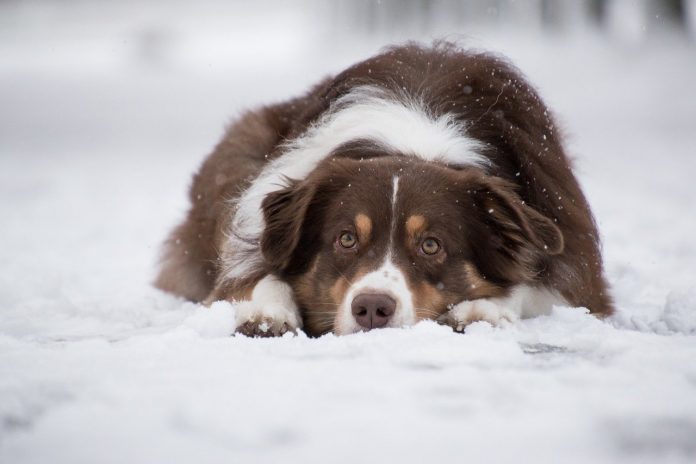Cold weather can put added stress on pets, livestock and other animals outdoors. They require more care and attention during the winter than almost any other time of the year.
Use these tips to care for your animals during periods of low temperatures.
Dogs
- During periods of sub-zero temperatures, bring outdoor dogs indoors even if it’s just in the garage.
- Don’t create an abrupt temperature change for dogs by allowing them indoors at night and putting them outdoors during the day. Housing them in a doghouse, tool shed or garage with plenty of bedding is better if they have to be left out for any length of time.
- If you decide to leave your dog outside during cold weather, make sure its shelter is clean, dry and well insulated with straw, wood shavings or a blanket. Additionally, change bedding when it becomes matted down or wet from repeated trips out in the snow.
- Position shelter openings away from the direction snow usually blows and equip with a door flap. It’s also ideal to elevate the floor of the shelter off the ground.
- Make sure your outdoor dog’s water is not frozen over either by changing it frequently or purchasing a heated water bowl.
- Outdoor dogs require more calories in cold temperatures because they use more energy staying warm in the cold. Add 10-15% more to your dog’s daily diet.
- When you take an inside dog to use the bathroom stay out with it. If you’re cold enough to go inside, so is your dog.
- When you bring your dog inside, wipe its paws and underside down and check for ice balls that may be clinging to fur or in between toes. Additionally, be sure to wipe any salt, deicers or other chemicals on your dog’s feet off completely. Licking them off can cause inflammation of your pet’s digestive tract.
- Make sure short-coat breeds are protected when taking them out to use the bathroom.
- Take extra care when taking out old or arthritic dogs to prevent slips, trips and falls that could result in major injuries.
- Keep your dog on a leash around frozen bodies of water to prevent them from falling through thin ice.
- Leave your dog at home when you make trips out of the house to avoid time spent waiting in cold vehicles.
- Roaming pets can become lost after a snowfall, so make sure their collar has up-to-date contact information.
Cats
- During periods of sub-zero temperatures, allow outdoor cats the option of coming indoors even if it’s just in a garage or shed.
- Avoid abrupt temperature changes by allowing cats in at night and leaving them out during the day.
- Make sure outdoors cats have adequate access to shelter.
- Make sure no outdoor or feral seeking shelter under the hood of your vehicle before starting it. Cats can be seriously injured or even killed if they don’t move when you start your engine.
- Make sure your cat has access to clean water that is not frozen over.
- Like dogs, cats use more calories during the winter and require a 10-15% increase in their daily diet.
Horses and livestock
- Provide a windbreak, cover, warm bedding, abundant high-quality feed and fresh water.
- Bedding should be spread in thick layers of straw or shavings to keep animals off the cold, wet ground.
- The open side of any livestock enclosure should face away from the direction the wind typically blows.
- Water should be heated or changed several times daily.
- Livestock will also require feed intake, especially protein intake, so use a high-quality feed.
- If you are heating a space with a heat bulb, consider using a high-low thermometer to check the effectiveness during extreme cold.










